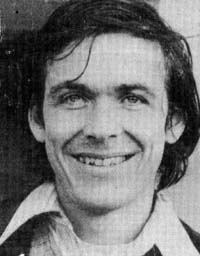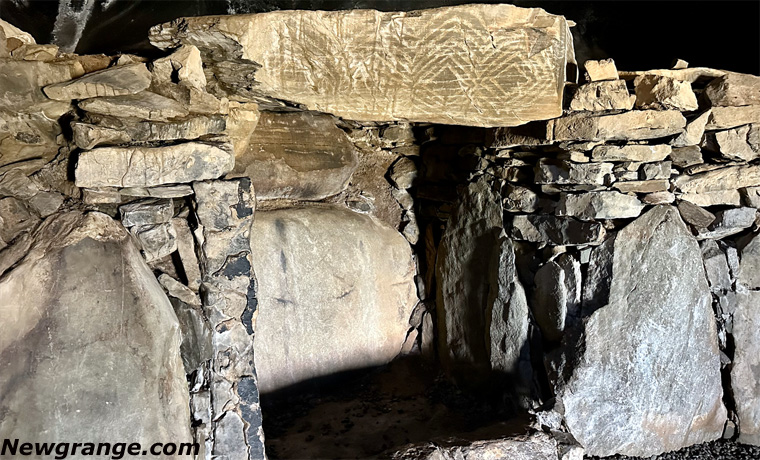Cracking the Newgrange Code - Martin Brennan - Page 3
 "The
necessary knowledge to place and align the stones and place the mounds astronomically is contained in the inscriptions which
are nothing less than powerful scientific tools with which they broke the code of the heavens with techniques that were not going
to be equalled again until science re-emerged again in Europe thousands of years later. It is a marvel and a wonder of the
world. In constructing Newgrange, they achieved the greatest unsurpassed feat of visual communication known to man."
Martin Brennan.
"The
necessary knowledge to place and align the stones and place the mounds astronomically is contained in the inscriptions which
are nothing less than powerful scientific tools with which they broke the code of the heavens with techniques that were not going
to be equalled again until science re-emerged again in Europe thousands of years later. It is a marvel and a wonder of the
world. In constructing Newgrange, they achieved the greatest unsurpassed feat of visual communication known to man."
Martin Brennan.
The next step was to find out what ultimately was being measured. As discoveries were occurring in rapid succession I didn't expect that within a few days of making discovery another major breakthrough would occur that would literally enable me to "see the light" regarding Stone Age technology. I stumbled over this quite accidentally while I was in the interior of the prehistoric mound called Fourknocks. The ceiling of this mound had long ago collapsed and it was recently reconstructed by the Office of Public Works, action in consultation with archaeologists. In order to light the interior, apertures were constructed into the ceiling and these were placed in positions to enhance the decorative effect of the stone inscriptions. In doing this they had in fact done, but for different reasons. The original constructors were not concerned with decorative effects, they were interested in making empirical observations of the movement of the sun and recording these observations.
I was taking measurements at the time when my attention was drawn to a strikingly beautiful beam of light. Suddenly, I stared in amazement as this beam of light began to register against a stone bearing measured inscriptions. As the day progressed, the beam of light slowly moved from west to east across the stone, the sequence being measured by the inscriptions. This observation provoked a chain reaction of intriguing thoughts. First of all, if there was any sundialling, it was advanced sundialling. There were using a ray of light. This is called a "spot" dial and it is a considerable advance over using a shadow. Secondly, a gnomon, which is simply a stick used to cast a shadow, is thought to be the first scientific instrument and its earliest uses can be placed over twenty thousand years ago, back in the Ice Age. A progressive development of this leading to the use of a spot dial could exploit the full potential of the instrument and its astronomical implications. This had a direct bearing on my immediate discoveries because, when I analysed the inscriptions in the framework of a grid system there was the strong suggestion of astronomical diagrams, planispheres, and computational devices illustrating the clockwork of the heavens.
Making accurate planispheres presupposes a knowledge of the angles of the ecliptic, the celestial equator and the celestial pole. This is the kind of information that is gleaned from the hard facts of the science and art of advanced sundialling. Finally, in 1974, investigations by Mr. J. Patrick had disclosed conclusive evidence that the orientation of Newgrange was deliberate.
To me, this suddenly had enormous implications since it meant that Boyne Valley geometers were undoubtedly aware of the technique of casting a beam of light. Furthermore, it is more than highly probable that the beam of light cast over a distance of more than 66 feet at Winter Solstice was preceded by many experiments and observations with shorter beams of light at other astronomically significant times.
A further consideration that I had to take into account was another fundamental requisite for making accurate planispheres: establishing the cardinal points, especially North, in order to provide a perfectly oriented meridian on earth prior to projecting a meridian on the celestial vault. A meridian line, or true North can be ascertained from sundialling.
My further investigation into the measuring system was producing staggering results. I was not surprised to find that the ground plans of the mounds had established meridians. What surprised me me was the realisation that the distance from Loughcrew to Newgrange, over 33 miles away, appeared to have been used as a unit measuring the distance between Newgrange and similar mounds over vast distances around Ireland.
A meridian line drawn through Newgrange and extending from the North of the South of the island placed Newgrange in the centre, with a distance incorporating this large measurement. At the northern extreme of this meridian line is a mound containing inscriptions. Accomplishing these feats entails a knowledge of latitude and longitude and a fully developed system of astronomy. I now had reason to suspect that the basis of this system was established by sundialling.
If the Boyne Valley geometers were involved in advanced sundialling and had created planispheres, it would necessitate having a knowledge of the celestial sphere in order to have poles and an equator and they would need to have a fairly accurate idea of the sun's circular path around the sphere in order to have an ecliptic.
This is considered scientific astronomy and there is no indisputable evidence of this found in Egyptian nor in Babylonian astronomy until the period of its development by the Greeks. The angles necessary for establishing the celestial sphere are found by measuring the length of the sun's shadow at noon during the equinoxes and solstices. If the inscriptions were what I now thought they were, they would somehow contain these measurements in their visual design and the design would work within the limits of these measurements.
Because of the astronomical significance of these moments in time, the sun's altitude can easily be calculated simply by knowing the latitude of the place. In order to establish concrete evidence from the point of view of visual design however, the length of the gnomon used must be known.
EXECUTIVE magazine 1979
Boyne Valley Private Day Tour
 Immerse yourself in the rich heritage and culture of the Boyne Valley with our full-day private tours.
Visit Newgrange World Heritage site, explore the Hill of Slane, where Saint Patrick famously lit the Paschal fire.
Discover the Hill of Tara, the ancient seat of power for the High Kings of Ireland.
Book Now
Immerse yourself in the rich heritage and culture of the Boyne Valley with our full-day private tours.
Visit Newgrange World Heritage site, explore the Hill of Slane, where Saint Patrick famously lit the Paschal fire.
Discover the Hill of Tara, the ancient seat of power for the High Kings of Ireland.
Book Now
Home
| Visitor Centre
| Tours
| Winter Solstice
| Solstice Lottery
| Images
| Local Area
| News
| Knowth
| Dowth
| Articles
| Art
| Books
| Directions
| Accommodation
| Contact


